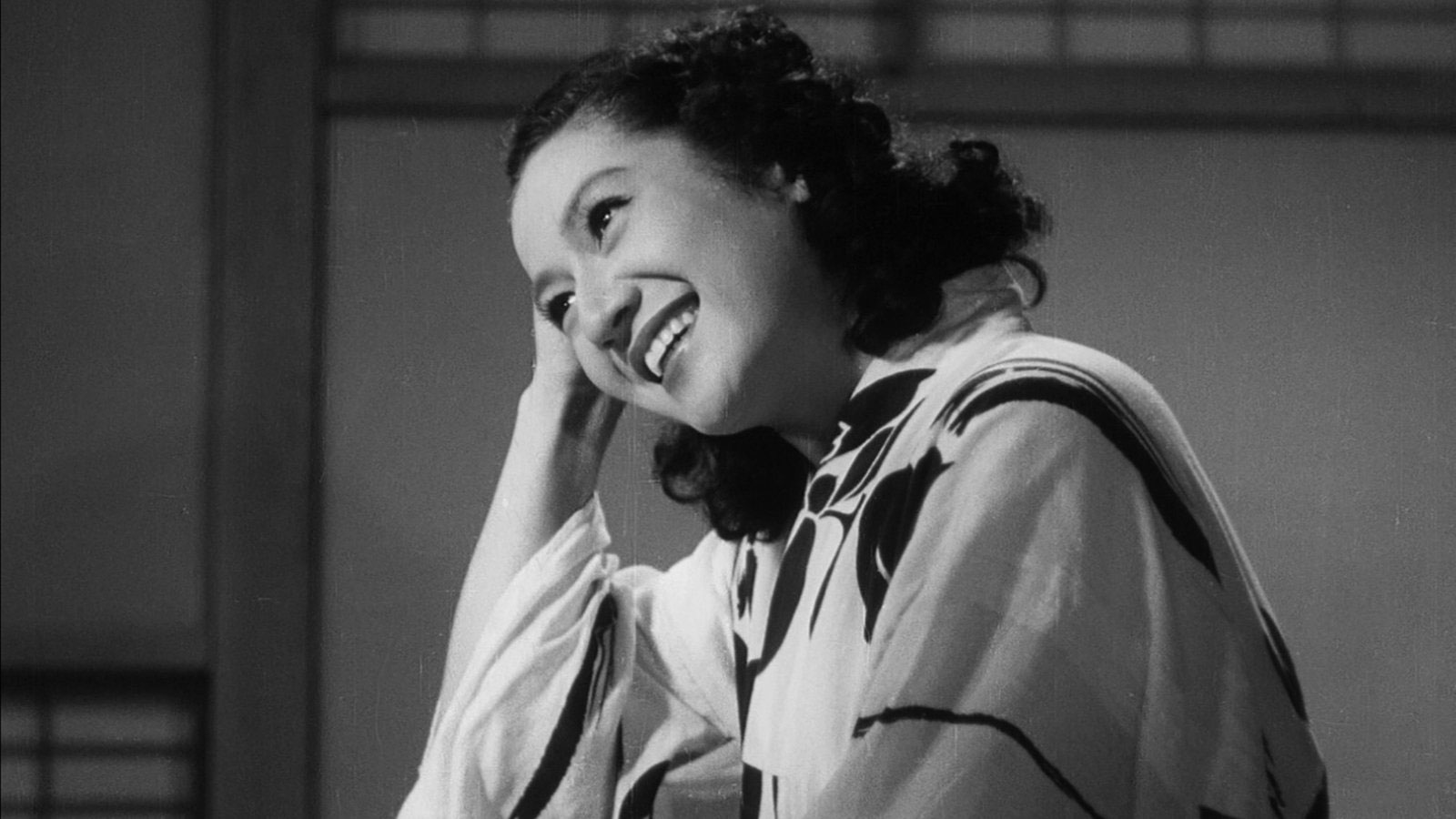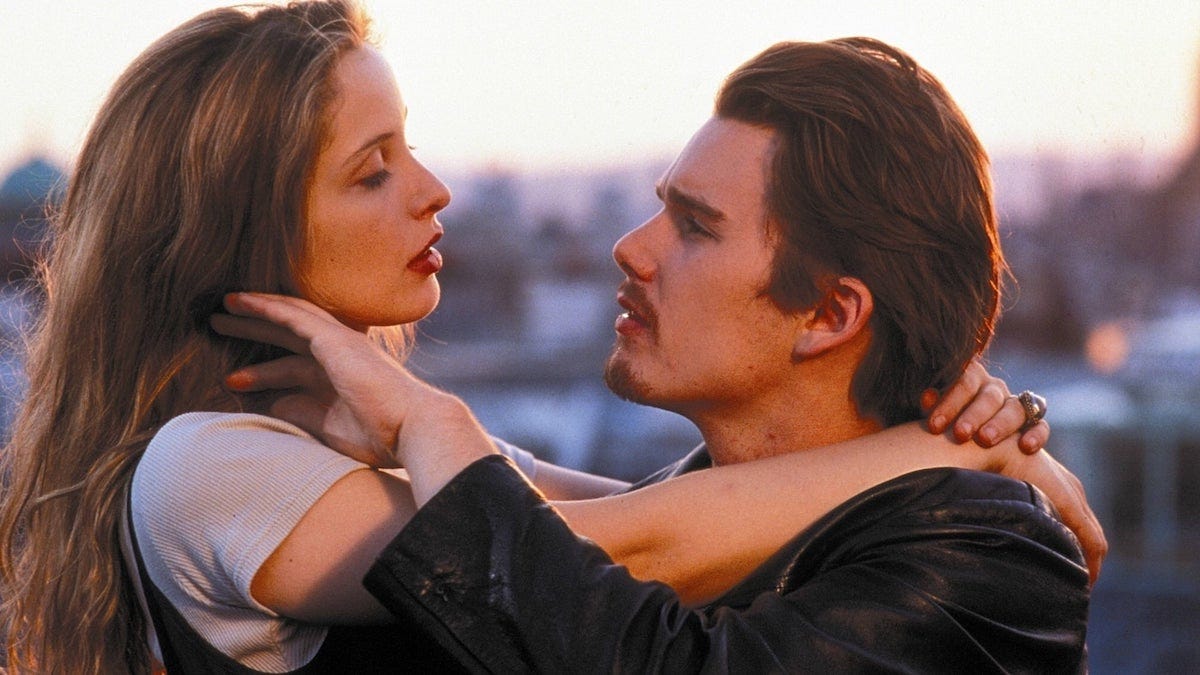Late Spring (1949)

Spring is typically the season of new life; however, in his 1949 masterpiece Late Spring, the great poet of domesticity Yasujiro Ozu manages to encapsulate the flipside of these symbolic beginnings. The central conflict surrounds Noriko Somiya’s refusal to marry as she dedicates herself to doting over her aging father Shukichi. Noriko’s position is a rare one, and we watch her try to hold strong against the typical course of life that is planned for her.
What makes Late Spring so moving is the inevitability of these social forces, surging as regularly as the yearly recurrence of the titular season. Two marriages are arranged over the course of the drama, but the focus is distanced from this climactic event: the characters involved never appear in the film afterwards. Ozu keeps his gaze trained on those left behind and savours the sweetness and melancholy of their gradual acceptance.
Words by Max King
Before Sunrise (1995)

Judging by the title, Before Sunrise—the first entry in Richard Linklater’s Before Trilogy—might not immediately correlate when relating to this time of year. But as spring symbolises new beginnings for many people, Jesse and Céline’s first blissful encounter in Vienna may resonate for many. The trilogy beautifully explores the excitement of a new romance; in particular, Before Sunrise explores that sudden adrenaline when meeting someone new. Those carefully articulate conversations, as you try to work each other out, are delicately performed by Ethan Hawke and Julie Delpy. As the pair struggle to say goodbye on the staton platform, we hope, to coin Rick Blaine, that this will be the beginning of a beautiful friendship. While we can enjoy the wonders of spring each year, it will take 18 years for that question to be answered for Jesse and Céline .
Words by Theo Smith
Spring, Summer, Fall, Winter… and Spring (2003)

Being the first season of the year, spring is usually associated with the concept of rebirth. Nowhere is this more evident on the big screen than in the 2003 South Korean film Spring, Summer, Fall, Winter… and Spring.
Taking place deep within the mountains, we follow a young Buddhist monk and his master living in a monastery floating on a lake. The setting alone evokes the serene quality of the season, and this contemplative tone permeates the entire narrative as the young boy grows into an adult. Through five segments that represent each season in the film’s title, we witness the pivotal stages in the monk’s life. It’s one thing to embody the spirit of the seasons, but to turn it into the driving force of the narrative, as well as a metaphor for the cyclical nature of life, further proves the endless possibilities that the medium of film still has to offer.
Words by Kai-Ming Chow
Pride & Prejudice (2005)

In Joe Wright’s gentle adaptation of Pride & Prejudice, there’s something utterly serene about watching a bare-faced Kiera Knightly stroll through open fields, grazing her hand over wheat grass, with her hair in a loose bun. Not forgetting that penultimate scene: as Knightly takes another stroll out into the fields, the sun begins to rise over the misty landscape. As the sun rises, the pair unite.
As much as I love the novel, the film adaptation captures the essence of spring in such a simple yet beautiful way.
Words by Jennifer Charlton
10 Things I Hate About You (1999)
:no_upscale()/cdn.vox-cdn.com/uploads/chorus_asset/file/15995767/10things7.jpg)
Gil Junger’s comedy classic 10 Things I Hate About You uses its high school setting to create an exciting narrative that exudes the feeling of springtime and change.
Kat begins the film as an angry, lonely girl who hates the thought of being happy, yet by the end she is being serenaded in the most American way through a brass band performance in the bleachers. There’s nothing that shouts spring more than a sunny day at school. The bittersweet love of Kat and Patrick creates a clean juxtaposition with the joy of springtime as the seniors move closer to their beloved ‘Spring Break’. Kat’s sister Bianca (Larisa Oleynik) learns to live without the controlling grasps of her overbearing but loving father, fledgling from the nest like creatures at spring.
Words by Katie Evans
The Secret Life of Walter Mitty (2013)

To me, The Secret Life of Walter Mitty is warmth. In all its quirkiness, it’s a story of hope, renewal and transformation. The main character, Walter, once lived unnoticed. He was a dull man, with a dull job and a dull life. But in challenging himself, he eventually finds joy in the everyday.
Like The Secret Life of Walter Mitty, spring is warmth. It is nature’s story of hope, renewal and transformation. Spring challenges winter to change its way and soon enough the days get brighter, the air gets warmer and joy is easier found. As Walter draws the curtains on his old self, spring opens hers for the first time.
Words by Molly Ashley
Support The Indiependent
We’re trying to raise £200 a month to help cover our operational costs. This includes our ‘Writer of the Month’ awards, where we recognise the amazing work produced by our contributor team. If you’ve enjoyed reading our site, we’d really appreciate it if you could donate to The Indiependent. Whether you can give £1 or £10, you’d be making a huge difference to our small team.